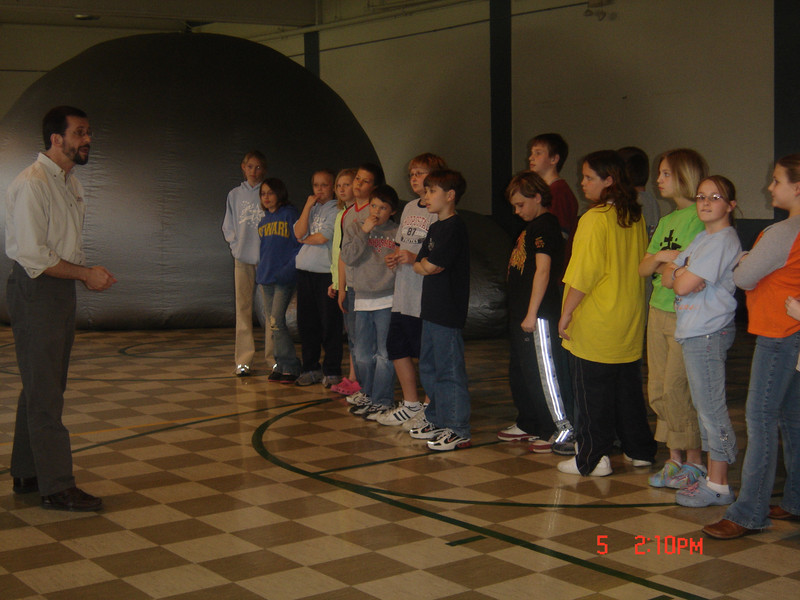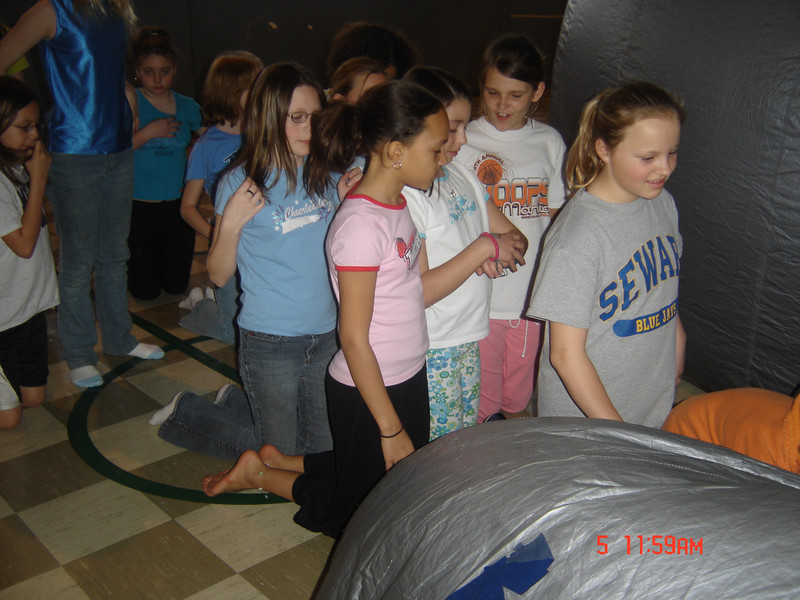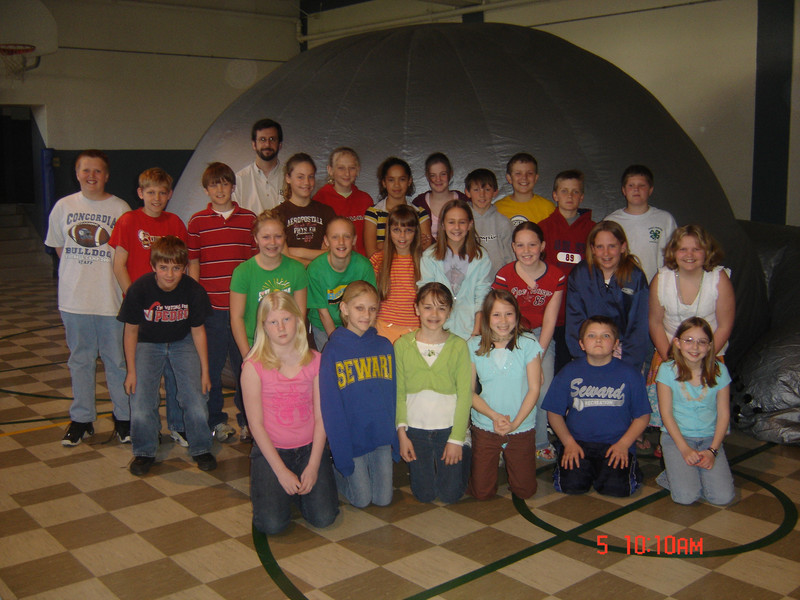5th Graders Visit Planetary Skylab
Planetary Tent
By: Seth Lewis
On Tuesday, April 4, Mrs. Broadwell's, Mrs. Haberman's, Miss Hayden's and Mrs. Stelling's fifth grade classes went to the little gym to go to a planetarium in a large tent-like dome.
As soon as they got there, they took off their shoes and crawled through a long, dark, wide tunnel. Dr. Hermann, a professor at Concordia University was waiting for them in the middle of the planetarium. When they all sat down, he turned on a giant, flashlight looking object. All of a sudden a bunch of stars popped out on the ceiling and walls!
The Amazing Skylab
By: Sierra Penas
Constellation means a configuration, or group of stars usually named after an animal or object. Some examples are the Big Dipper, Little Dipper, Scorpious, Orion and Leo.
When stars get old they puff up to tremendous sizes. Some get so big that Mercury, Venus, Earth and Mars orbit could fit inside. Now that's HUGE!
Starlab Astonishes Grade 5
By: Sarah Moody
At night stars orbit the earth it seems. But, it is only the earth spinning. If you compare the stars in the sky at 9:00 p.m. to those at 4:00 a.m., you will find that they seem to have moved almost half way across the sky. Some will be completely out of view. But, lo and behold, the North Star is always in the north.
Life on Stars
By: Tasha Tieken
Did you know that stars are up all day and night? Well, they are, but they are illuminated by the sun. This is interesting, very interesting!
Wow, Look at all Those Glistening Stars!!!
By: Morgan Prochnow
If you get a chance to look outside at the sky, look for the constellation Orion, which is the hunter in the sky. Also, you might want to look for his two dogs. But, of course, a hunter needs something to hunt, why not Taurus, the bull? At the top of the Little Dipper's handle you can see a star which is called the North Star. Remember to look outside for them tonight.





 Launch the media gallery 1 player
Launch the media gallery 1 player Launch the media gallery 2 player
Launch the media gallery 2 player Launch the media gallery 3 player
Launch the media gallery 3 player